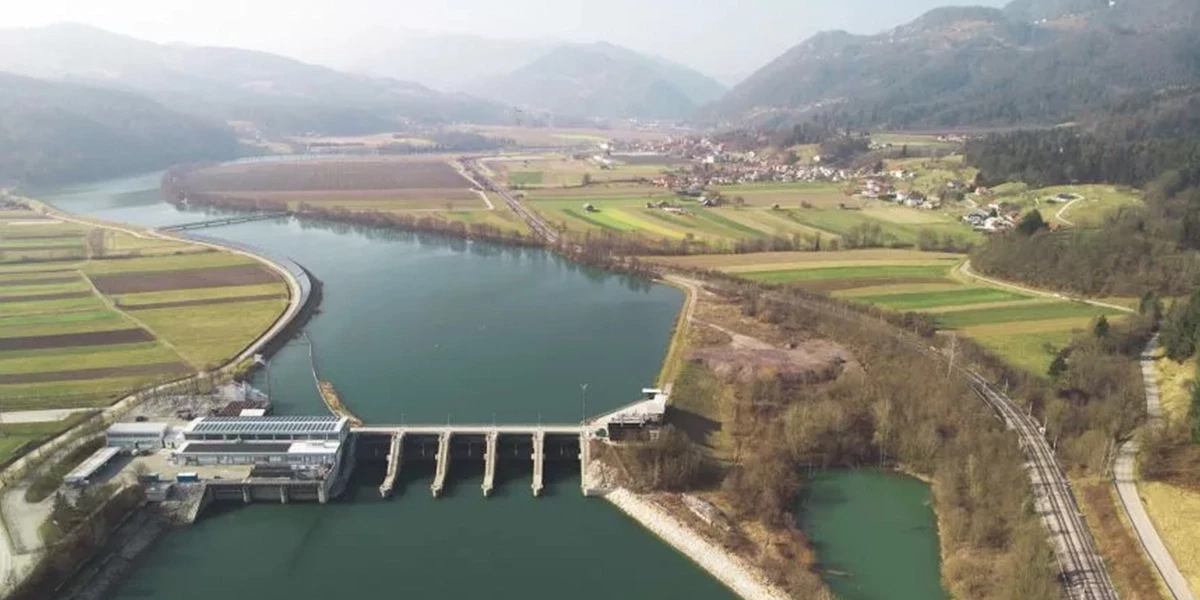Sluice gates are hydraulic structures that have a crucial role in the management of water flow in canals and rivers. They have been utilised for centuries to regulate irrigation, prevent flooding, and ensure a reliable water supply for various purposes. This article explores the functioning and significance of sluice gates, as well as the innovative use of Bituminous GeoMembrane in conjunction with sluice gates to enhance their efficiency.
What is a Sluice Gate?
A sluice gate is a movable barrier placed in the path of flowing water to control its flow rate and direction. These gates are typically constructed using sturdy materials such as steel, wood, or concrete and strategically positioned within canals, rivers, dams, and other waterways. Sluice gates can be operated manually, electrically, or through hydraulic systems, depending on their size and intended purpose.
The primary functions of sluice gates include:
- Water Flow Control: Sluice gates enable the adjustment of water levels and flow rates in canals and rivers. By raising or lowering the gate, the volume of water passing through can be controlled, making them essential for managing water resources and irrigation.
- Flood Control: During periods of heavy rainfall or excessive water flow, sluice gates can be utilised to divert or contain water, thus preventing flooding in downstream areas.
- Irrigation: Sluice gates are employed in agricultural irrigation systems to deliver water to fields when needed, ensuring optimal crop growth and water conservation.
- Water Supply: In urban areas, sluice gates are utilised to regulate the supply of water from rivers and canals for domestic, industrial, and municipal use.
- Hydropower Generation: Sluice gates are integral to hydropower plants, where they control the release of water to drive turbines and generate electricity.
The operation of a sluice gate is a relatively straightforward process that requires precision to effectively control the flow of water. Positioned within a water channel, the gate's height can be adjusted to determine the volume of water passing through. Here is a step-by-step breakdown of how sluice gates work:
- Gate Position: Initially, the sluice gate is set at a specific height or angle, which determines the opening through which water can flow.
- Flow Control: Operators have the ability to adjust the gate's position, allowing them to increase or decrease the size of the opening. This adjustment directly controls the rate of water flow. Lowering the gate reduces the flow while raising it increases the flow.
- Locking Mechanism: To secure the gate in place once the desired water flow rate has been achieved, many sluice gates are equipped with locking mechanisms.
- Maintenance: Regular maintenance is crucial to ensure the proper functioning of sluice gates. This includes inspecting the gate structure, lubricating moving parts, and addressing any wear or damage.
- Bituminous GeoMembrane in Conjunction with Sluice Gates: In order to enhance the efficiency and effectiveness of controlling water flow, sluice gates are increasingly being used in conjunction with Bituminous GeoMembrane, a waterproofing material. Made from bitumen, a petroleum-based substance, GeoMembrane offers several advantages when used with sluice gates. Water Management Companies like Yooil have proved their potential in the Geomembrane structures through a long and successful history of over 30 years.
- Seepage Prevention: Bituminous GeoMembrane acts as an impermeable barrier to prevent water seepage under or around the sluice gate, thereby maintaining the gate's integrity and the overall hydraulic structure.
- Durability: GeoMembrane is highly durable, resistant to weathering, and has a long service life. It can withstand the challenging environmental conditions found in waterways, ensuring the long-term functionality of sluice gates.
- Easy Installation: Installing Bituminous GeoMembrane is a straightforward process, making it a cost-effective solution to enhance the waterproofing of sluice gates.
- Versatility: GeoMembrane is suitable for use in various types of sluice gates, regardless of whether they are made of steel, concrete, or other materials.
- Environmental Compatibility: Bituminous GeoMembrane is environmentally friendly and does not pose a threat to aquatic life or water quality. It is a safe and reliable solution for sluice gate waterproofing.
Applications of Sluice Gates and GeoMembrane
Sluice gates and Bituminous GeoMembrane have a wide range of applications in hydraulic engineering and water resource management:
- Flood Control: Sluice gates are strategically positioned in flood-prone areas to divert or contain excess water, preventing damage to downstream communities and infrastructure
- Irrigation: In agriculture, sluice gates control water flow to fields and crops, ensuring efficient irrigation and resource conservation.
- Hydroelectric Power: Sluice gates are crucial in hydropower plants, regulating the flow of water to generate electricity through turbines.
- Water Supply: In urban areas, sluice gates manage the distribution of water from rivers and canals for domestic and industrial use, ensuring a steady and reliable supply.
- Reservoir Management: Sluice gates play a vital role in managing water reservoirs, ensuring water quality, and controlling outflows as needed.
Wastewater Treatment: Sluice gates play a crucial role in the treatment of wastewater in plants by regulating the flow of sewage and overseeing the treatment process.
- Environmental Conservation: Sluice gates have the potential to be employed in the management of water levels in wetlands and estuaries, aiding in the preservation of natural habitats.
Sluice gates are essential hydraulic structures that effectively manage water flow in canals and rivers. They are pivotal in controlling water levels, preventing floods, and ensuring a consistent water supply for various purposes. By incorporating innovative solutions such as Bituminous GeoMembrane alongside sluice gates, we can further enhance their efficiency, durability, and environmental compatibility.


